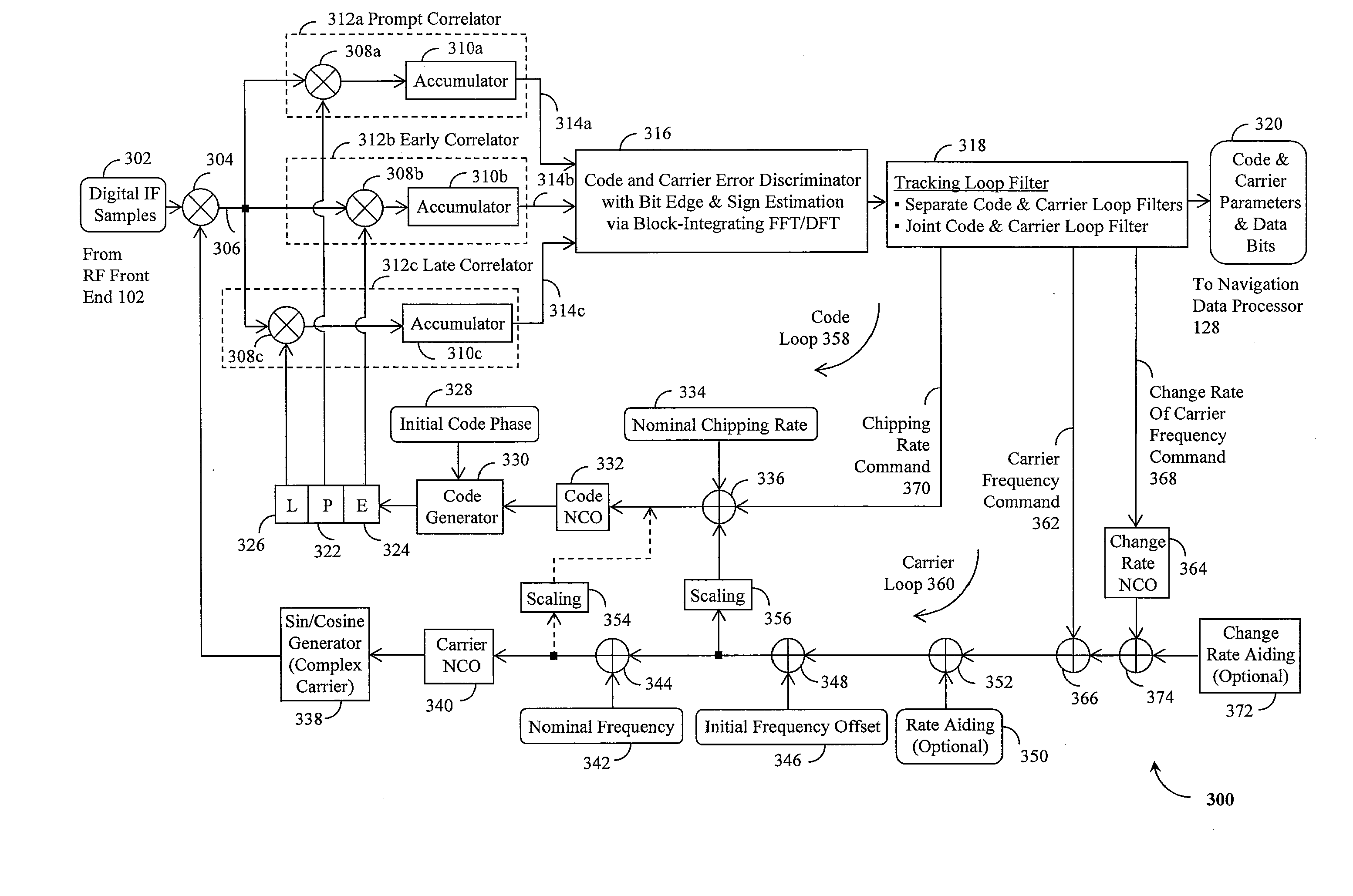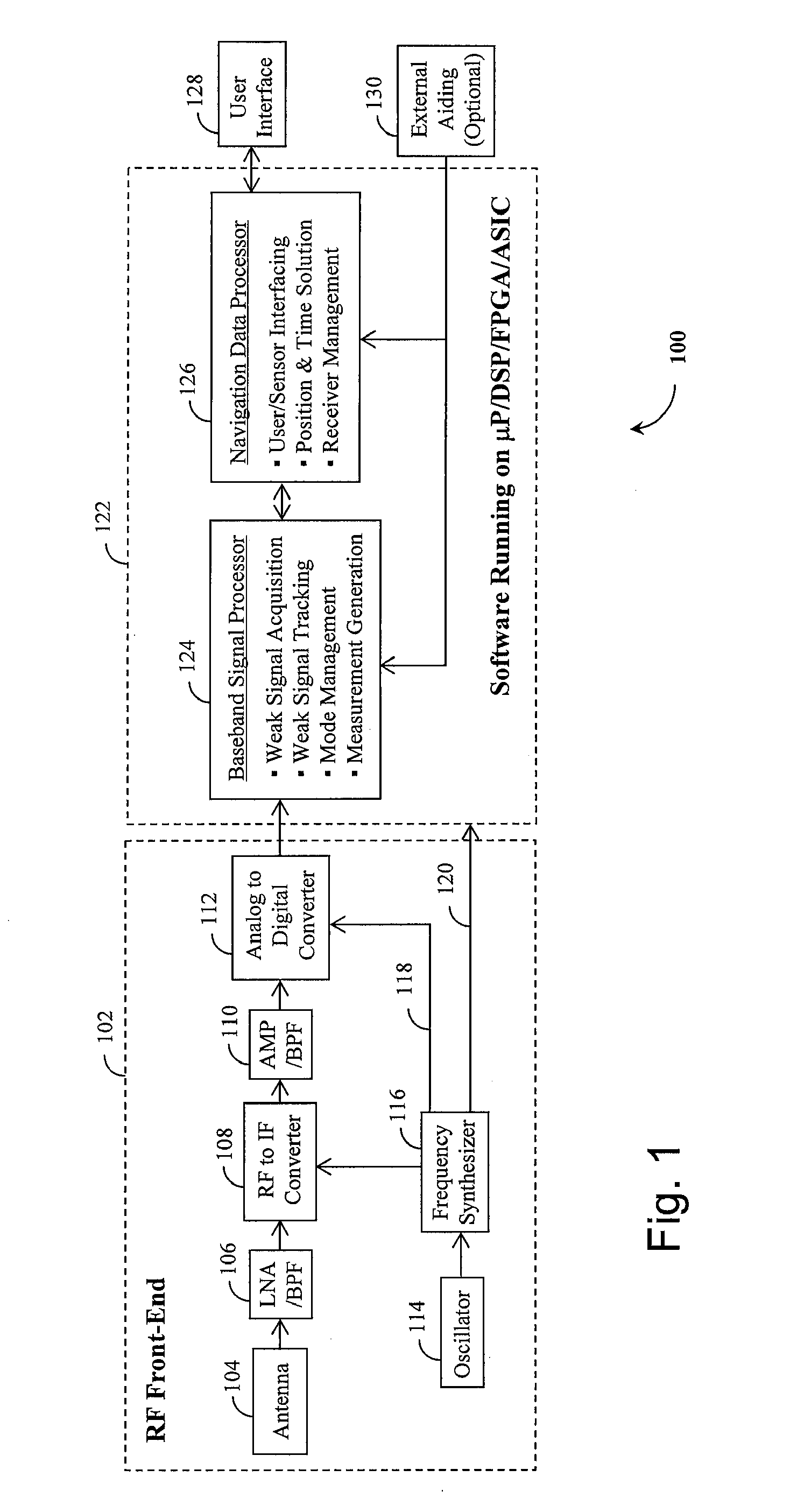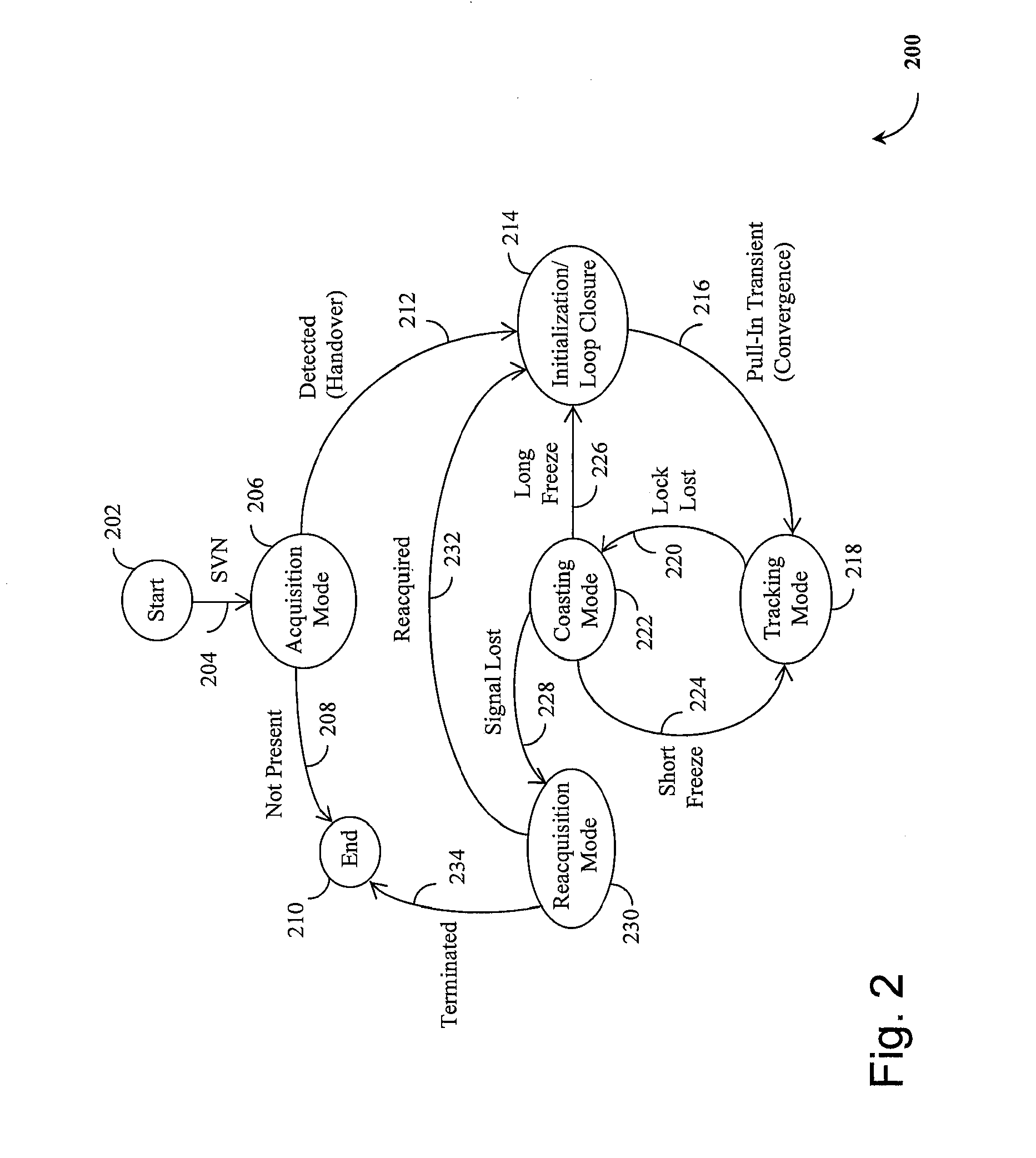Method and device for tracking weak global navigation satellite system (GNSS) signals
a global navigation satellite and signal technology, applied in the direction of measurement devices, satellite radio beaconing, instruments, etc., can solve the problems of weak global navigation satellite system (gnss) signal strength, weak positioning accuracy, and breakdown of tracking loops inside regular receivers
- Summary
- Abstract
- Description
- Claims
- Application Information
AI Technical Summary
Benefits of technology
Problems solved by technology
Method used
Image
Examples
Embodiment Construction
[0028] The present invention provides systems and methods for a GNSS receiver capable of tracking weak satellite signals and extracting time, frequency and other parameters from the signals as an integral part of the receiver's baseband signal processor operations. Although systems and methods of the present invention can be used for the tracking of various signals used in the GNSS, systems and methods of the present invention are particularly well suited for use with the tracking of signals from GPS satellites. Accordingly, although not so limited, an exemplary embodiment of the present invention will be described in an application of tracking weak signals from GPS satellites.
[0029] Referring to FIG. 1, an exemplary standalone high-sensitivity GPS receiver 100 is shown with its weak signal tracking capability implemented as an integral part of the receiver's baseband signal processor 124 software, which runs on a microprocessor (μP), a digital signal processor (DSP), a field progr...
PUM
 Login to View More
Login to View More Abstract
Description
Claims
Application Information
 Login to View More
Login to View More - R&D
- Intellectual Property
- Life Sciences
- Materials
- Tech Scout
- Unparalleled Data Quality
- Higher Quality Content
- 60% Fewer Hallucinations
Browse by: Latest US Patents, China's latest patents, Technical Efficacy Thesaurus, Application Domain, Technology Topic, Popular Technical Reports.
© 2025 PatSnap. All rights reserved.Legal|Privacy policy|Modern Slavery Act Transparency Statement|Sitemap|About US| Contact US: help@patsnap.com



